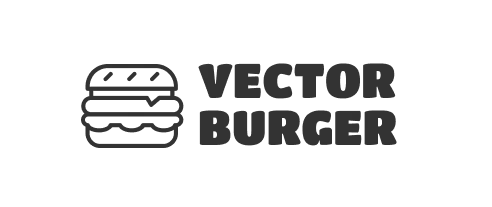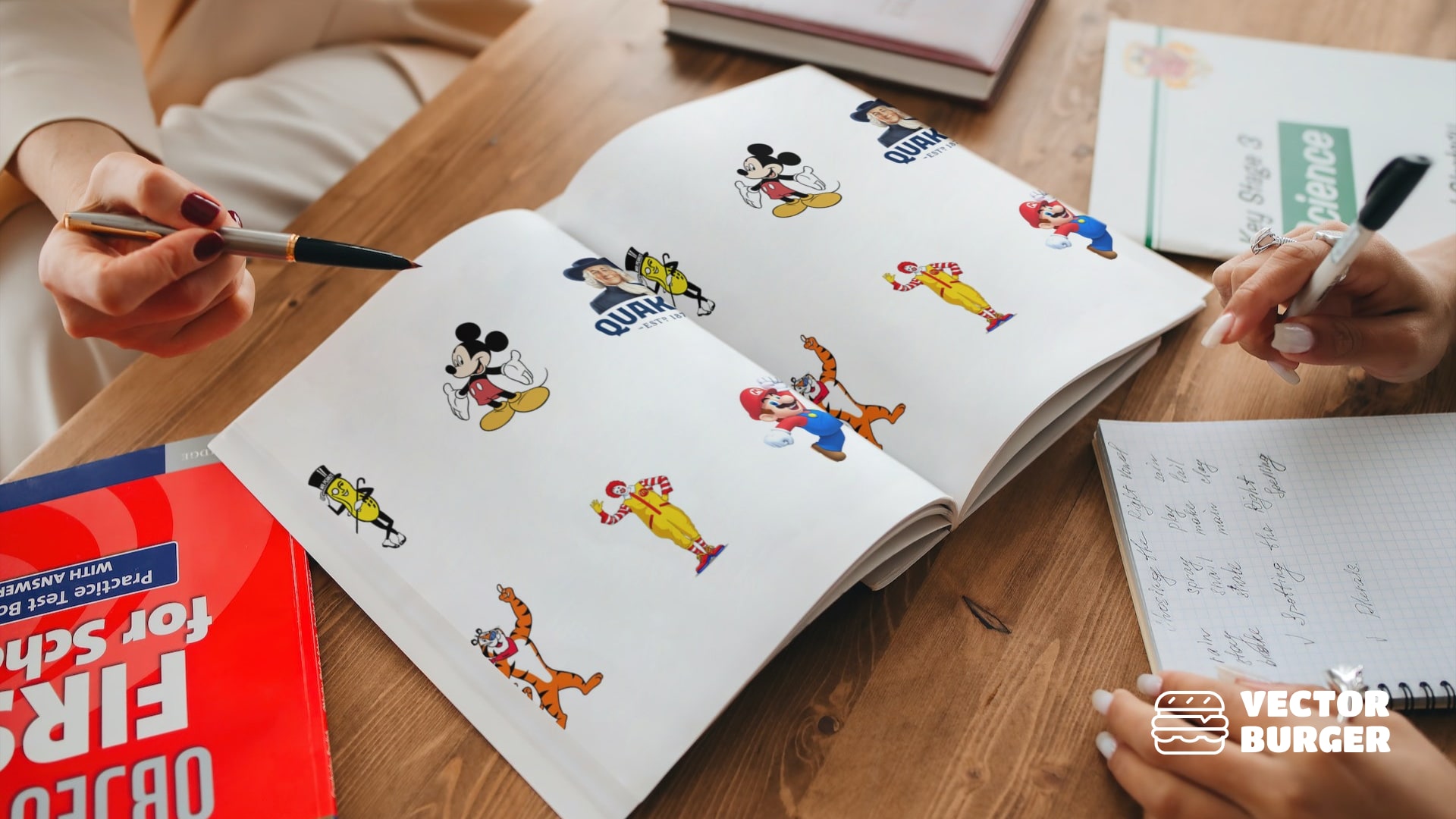In the world of marketing and advertising, brand mascots play a pivotal role in establishing brand identity and fostering consumer loyalty. These iconic characters not only represent their respective companies but also become enduring symbols ingrained in our collective consciousness.
Over the years, a select few have risen to legendary status, transcending mere advertising to become cultural icons. In this article, we will explore the 24 most famous brand mascot designs of all time, each with its unique charm and influence.
1. The Michelin Man (Bibendum)
Debut: 1894
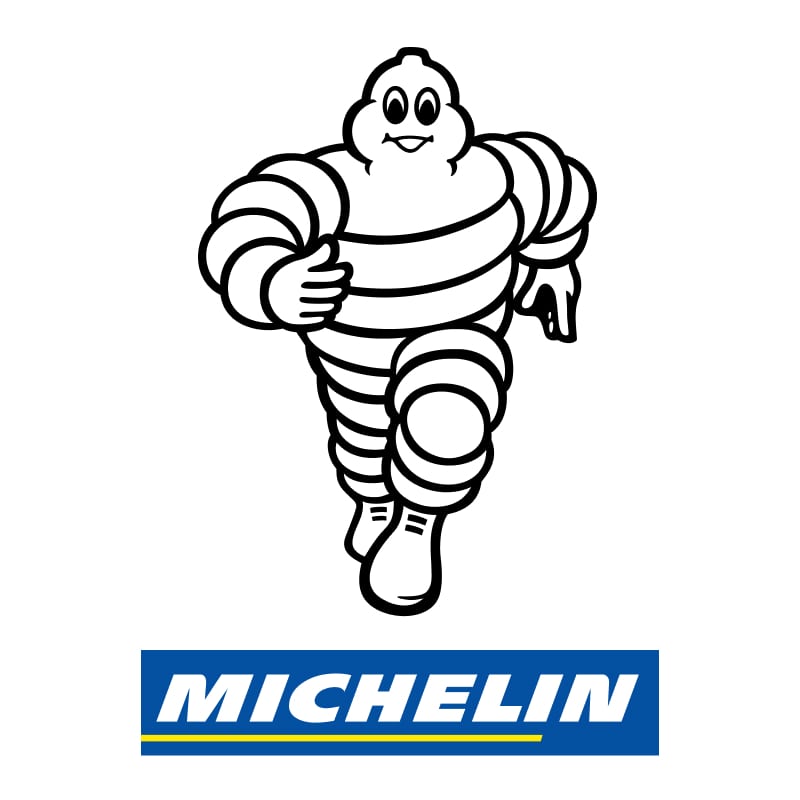
The Michelin Man, also known as Bibendum, stands as one of the oldest and most recognizable brand mascots in the world. Born in 1898, this inflatable, white-clad character with a jovial demeanor has been the face of Michelin, the renowned tire company, for over a century. His distinctive appearance, resembling a stack of tires with a human touch, was originally conceived as a representation of the company’s tires being robust and enduring.
The Michelin Man became an enduring symbol of safety and quality in the automotive industry, his friendly persona embodying Michelin’s commitment to reliability. Over the years, Bibendum’s design has evolved, but his status as an iconic figure in both advertising and popular culture remains, showcasing the timeless appeal and enduring impact of a well-crafted brand mascot.
2. Mr. Peanut – Planters
Debut: 1916
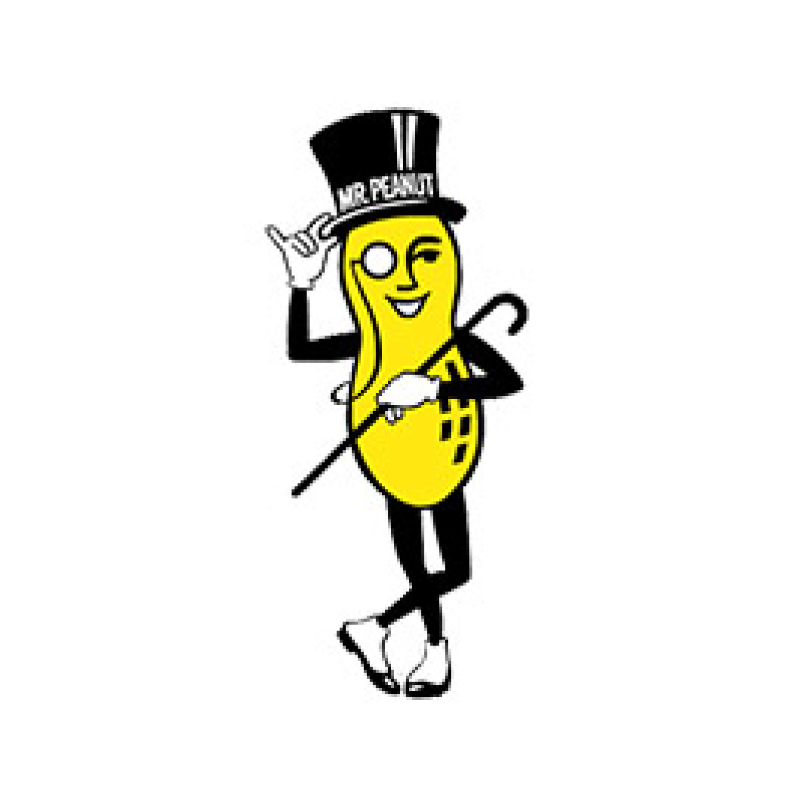
Mr. Peanut, the suave and sophisticated mascot of Planters, has been a staple in the world of snacks since his creation in 1916. With his iconic top hat, monocle, and cane, Mr. Peanut exudes an air of timeless elegance. Serving as the charming ambassador for Planters’ nuts and snacks,
Mr. Peanut not only symbolizes the brand’s commitment to quality but also adds a touch of class to the snacking experience. Over the years, his character has undergone subtle transformations while retaining its core elements, making him an enduring and recognizable figure. Mr. Peanut’s charismatic presence in advertising campaigns and on product packaging has solidified his status as a beloved icon, seamlessly blending sophistication with the joy of snacking.
3. The Laughing Cow by… The Laughing Cow
Debut: 1921
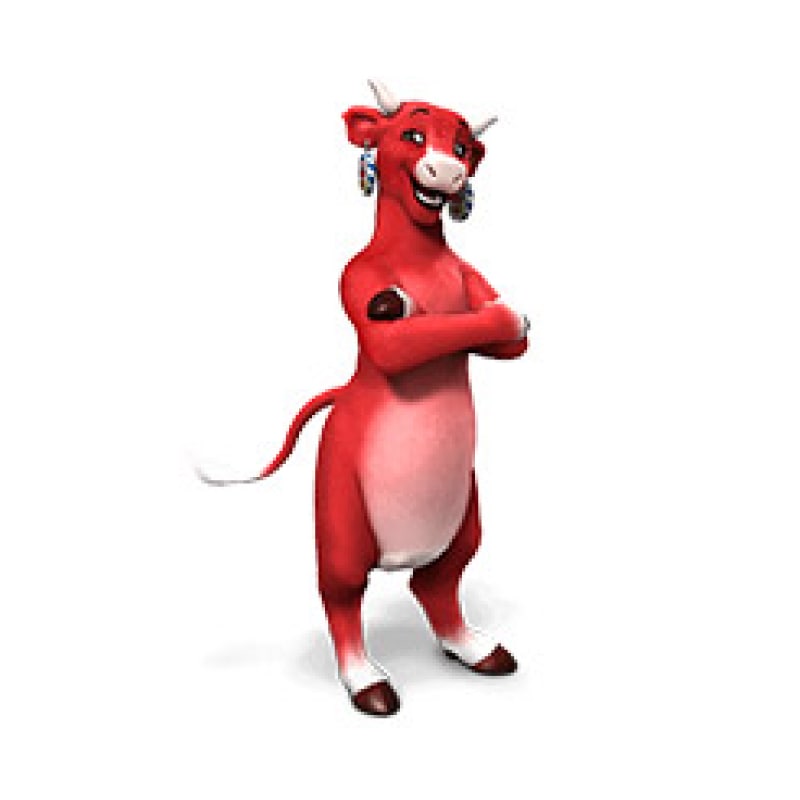
The Laughing Cow mascot, commonly known as La Vache Qui Rit, is an iconic symbol of the popular cheese brand. This whimsical character features a cheerful, laughing cow adorned with earrings, a necklace, and a crown, radiating a playful and friendly persona. Serving as the face of The Laughing Cow cheese products, this mascot reflects the brand’s commitment to spreading joy and delight through its delectable and creamy cheese offerings.
4. Mickey Mouse – Disney
Debut: 1928
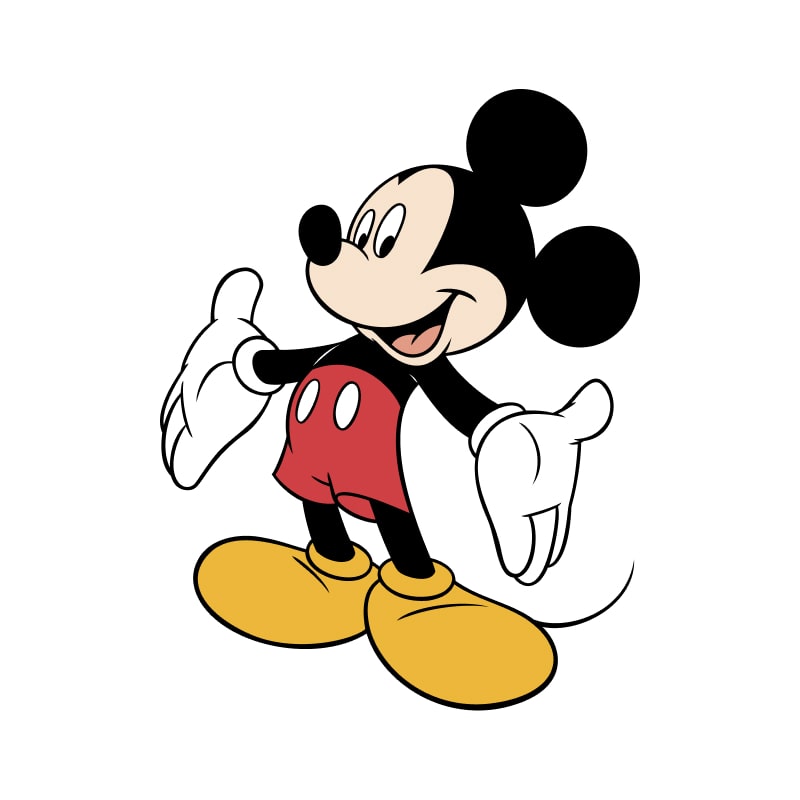
Mickey Mouse, created by Walt Disney and Ub Iwerks in 1928, is not only a beloved brand mascots but a cultural icon and the face of the Disney empire. With his iconic round ears, red shorts, and white gloves, Mickey exudes charm and optimism, embodying the spirit of joy and imagination. Over the decades, Mickey Mouse has transcended his role as a cartoon character, becoming a symbol of childhood nostalgia, entertainment, and the magical world of Disney.
5. Tony the Tiger – Kellogg’s Frosted Flakes
Debut: 1952
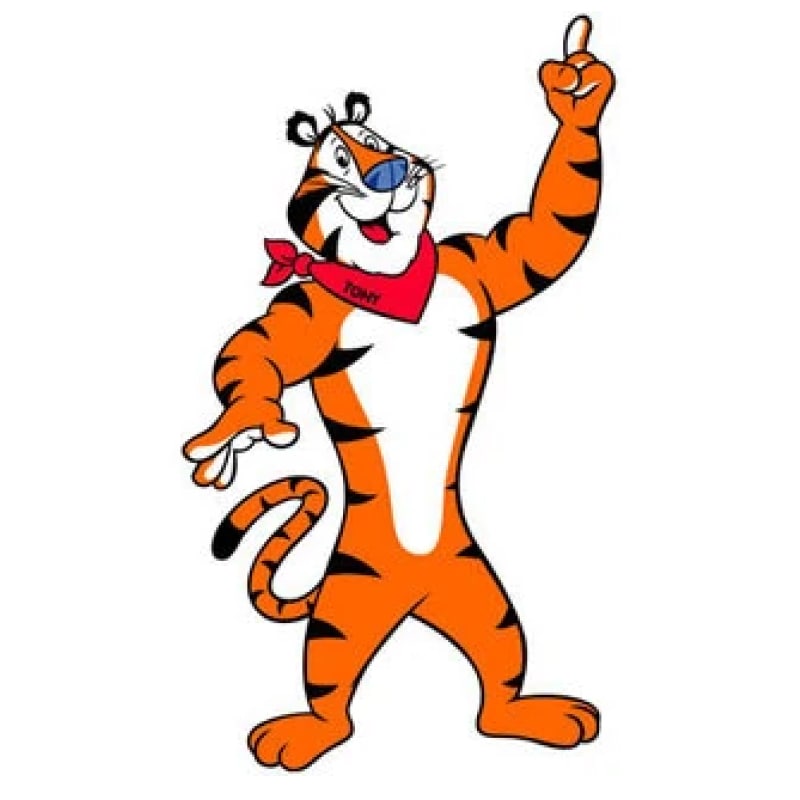
Tony the Tiger, introduced by Kellogg’s in 1952, is an enduring mascot known for his enthusiastic catchphrase, “They’re Gr-r-reat!” With his vibrant orange fur, black stripes, and friendly demeanor, Tony has become synonymous with Kellogg’s Frosted Flakes cereal. This iconic mascot not only represents the deliciousness of the breakfast cereal but has also left an indelible mark on pop culture, becoming a beloved figure in the world of advertising and a symbol of morning cheer.
6. Ronald McDonald – McDonald’s
Debut: 1963
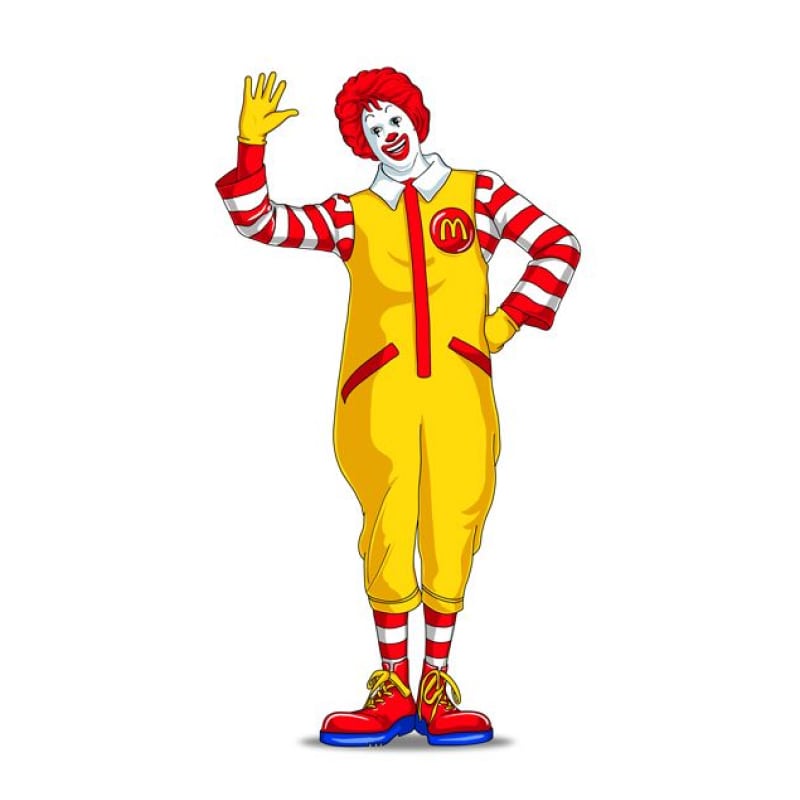
Ronald McDonald, introduced in 1963, is the iconic and cheerful clown mascot of McDonald’s, instantly recognizable with his bright red hair, yellow jumpsuit, and oversized red shoes. Serving as the face of the fast-food giant, Ronald embodies the family-friendly and welcoming atmosphere that McDonald’s aims to provide. Beyond advertising, Ronald McDonald has become a cultural symbol, participating in charitable endeavors and community events, making him not only a mascot for a brand but also a philanthropic ambassador for McDonald’s.
7. Geoffrey the Giraffe – Toys “R” Us
Debut: 1969
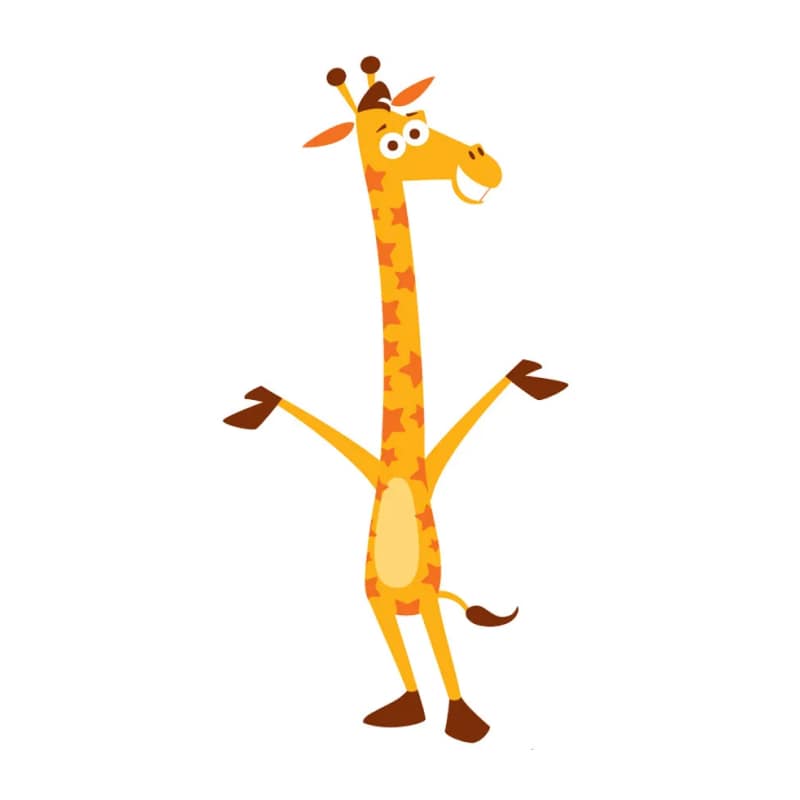
Geoffrey the Giraffe is the iconic and beloved mascot of Toys “R” Us, the renowned toy retailer. With his friendly demeanor and distinctive appearance, Geoffrey has been a symbol of joy and childhood excitement for generations of children. The giraffe mascot became synonymous with the magical experience of shopping for toys at Toys “R” Us stores around the world until the company faced financial challenges and eventually closed many of its locations.
8. The Energizer Bunny
Debut: 1989
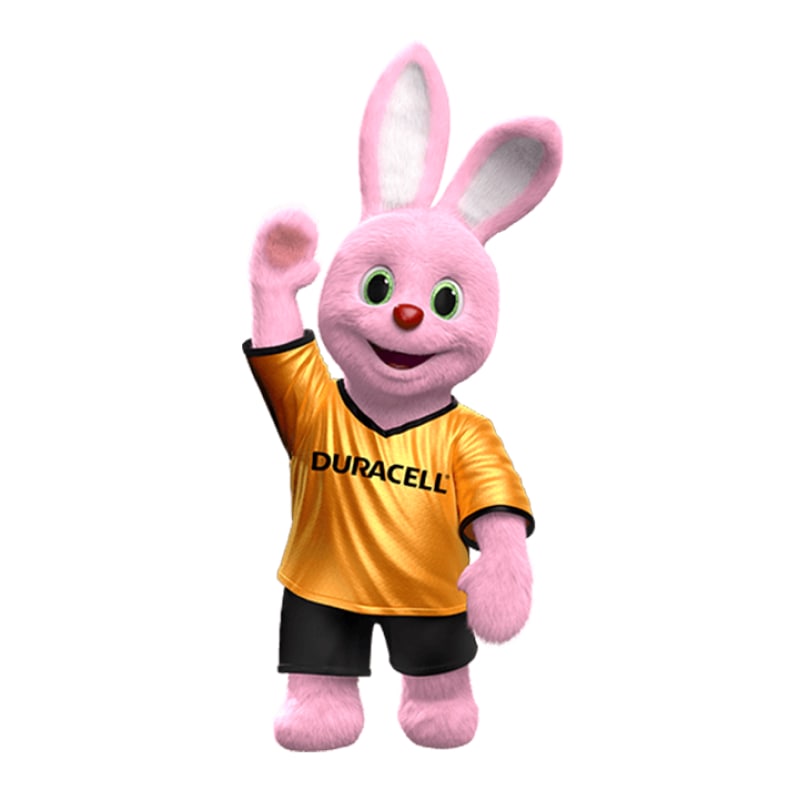
The Energizer Bunny is a vibrant and enduring mascot known for promoting Energizer batteries. This anthropomorphic pink bunny, wearing sunglasses and flip-flops, is famous for its unstoppable energy, symbolizing the long-lasting power of Energizer batteries. The bunny first appeared in advertising in 1989 and has since become an enduring and recognizable character in popular culture, often depicted tirelessly beating a drum to highlight the brand’s message of long-lasting battery life.
9. The Pillsbury Doughboy (Poppin’ Fresh)
Debut: 1965
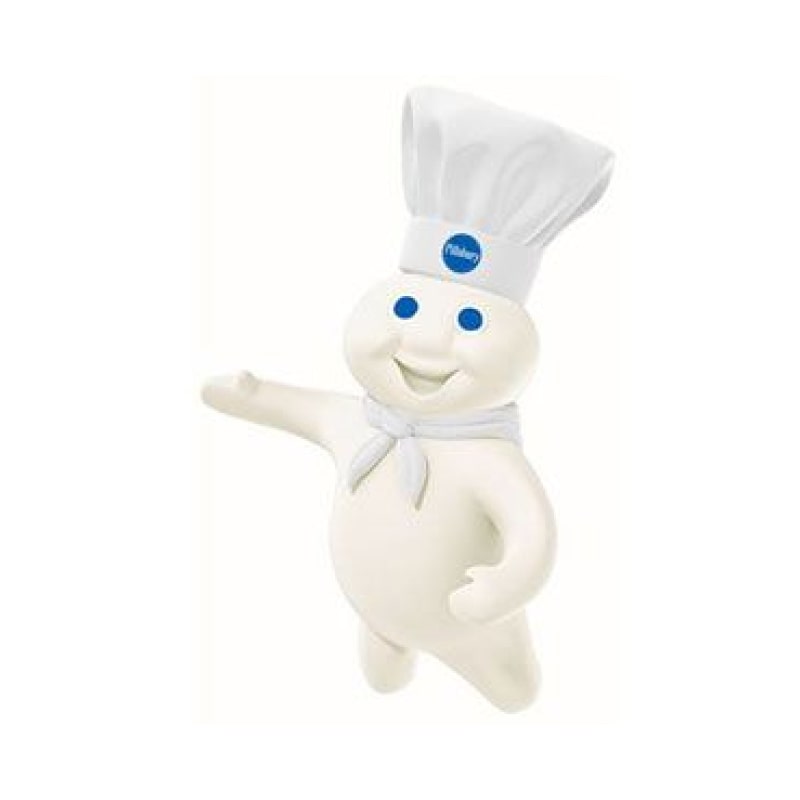
The Pillsbury Doughboy, affectionately known as Poppin’ Fresh, is the iconic mascot of the Pillsbury Company, renowned for its refrigerated dough products. Introduced in 1965, this small, giggling character with a trademark white chef’s hat and blue scarf quickly became a beloved symbol in advertising. His catchphrase “Hoo-hoo!” and playful persona have contributed to the enduring popularity of Pillsbury products, making the Doughboy a cherished figure in the world of food marketing.
10. Colonel Sanders – KFC Brand Mascot
Debut: 1998
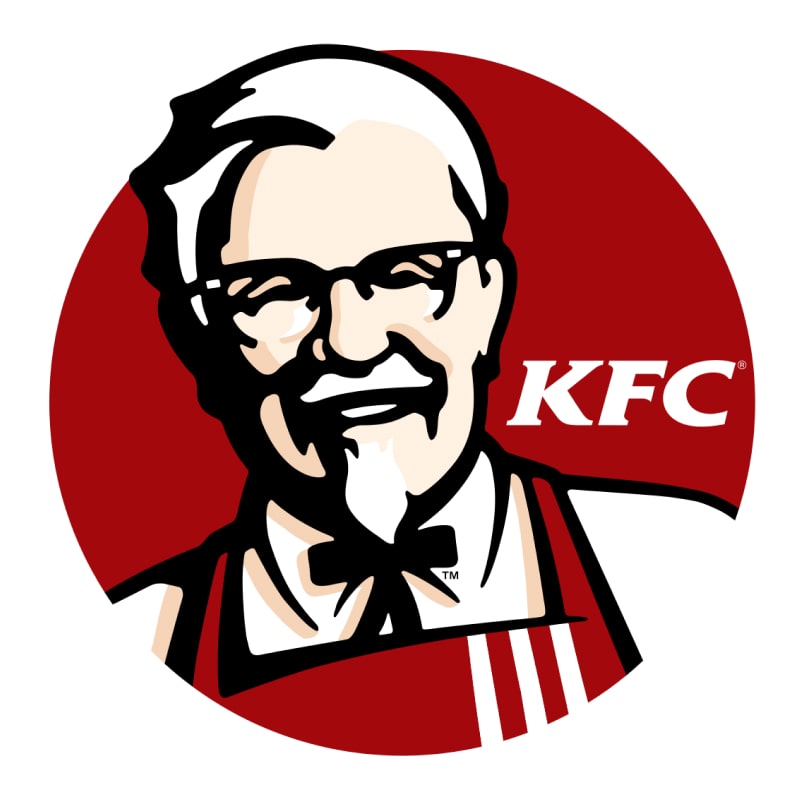
Colonel Sanders, the founder of Kentucky Fried Chicken (KFC) brand mascots, is often regarded as the iconic mascot of the fast-food chain. Sporting his distinctive white suit, black string tie, and goatee, Colonel Sanders became synonymous with KFC’s original recipe fried chicken. His image has endured as a symbol of the brand’s Southern hospitality and commitment to quality, making him a recognizable and enduring figure in the world of fast food.
11. Toucan Sam – Froot Loops
Debut: 1963
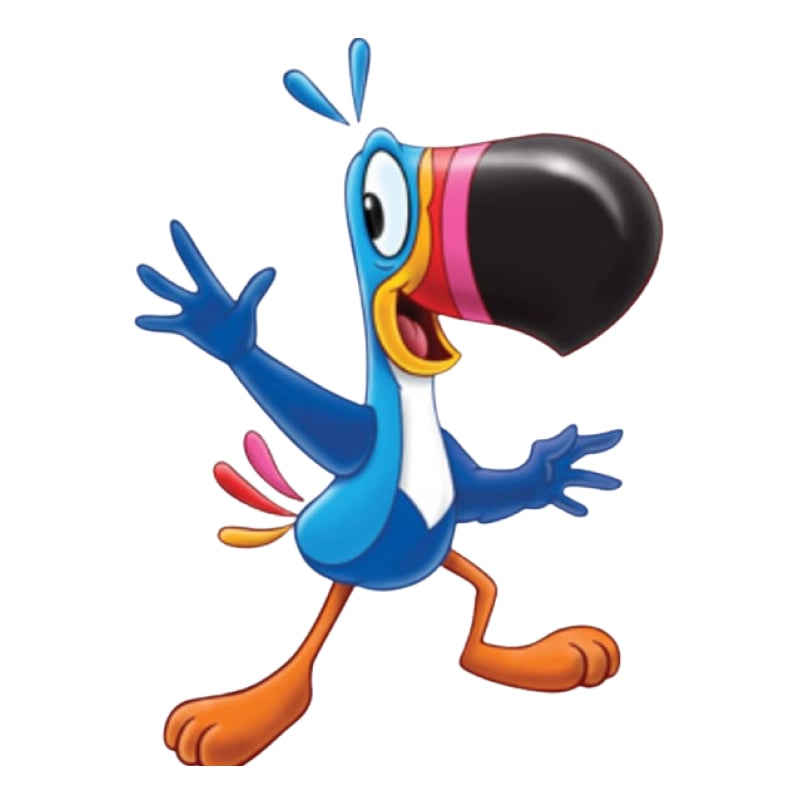
Toucan Sam is the vibrant and colorful mascot of Froot Loops cereal, introduced by Kellogg’s in 1963. With his brightly colored beak and a rainbow of feathers, Toucan Sam is known for his catchphrase “Follow your nose!,” encouraging consumers to indulge in the fruity flavors of Froot Loops. Over the years, Toucan Sam has become an iconic figure in breakfast cereal advertising, symbolizing the fun and flavor that Froot Loops bring to the breakfast table.
12. Chester Cheetah – Cheetos Mascot
Debut: 1980
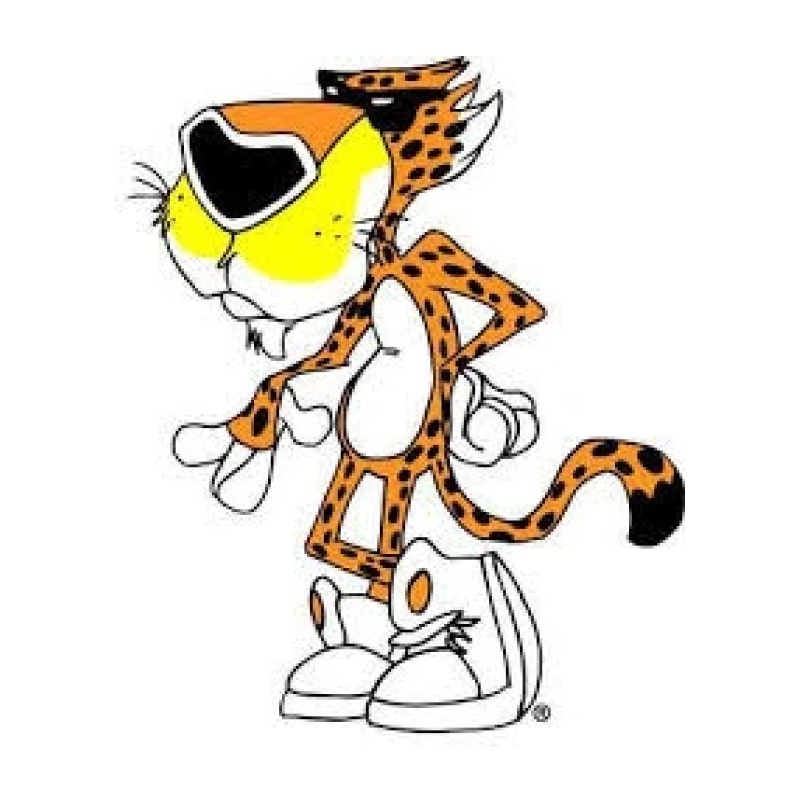
Chester Cheetah is the cool and laid-back brand mascots of Cheetos, the popular cheesy snack brand. Introduced in the late 1980s, Chester is known for his sleek and mischievous persona, often embodying the “dangerously cheesy” allure of Cheetos. With his sunglasses and sly attitude, Chester Cheetah has become a memorable and enduring figure in snack food advertising, synonymous with the cheesy goodness that defines Cheetos.
13. The Kool-Aid Man Mascot
Debut: 1950

The Kool-Aid Man is the iconic mascot of the popular powdered drink mix, Kool-Aid. Debuting in the 1950s, the Kool-Aid Man is a pitcher-shaped character with a smiling face, known for bursting through walls to deliver refreshing Kool-Aid to kids in various commercials. His signature catchphrase, “Oh yeah!” and memorable antics have made the Kool-Aid Man a pop culture symbol and a nostalgic figure associated with summertime refreshment and childhood fun.
14. The Trix Rabbit – Trix Cereal
Debut: 1959

The Trix Rabbit is the mischievous and persistent mascot of Trix cereal, introduced by General Mills in 1959. The rabbit is characterized by his insatiable desire to taste the colorful, fruity cereal but is consistently thwarted by the children who insist that Trix are for kids. Despite numerous attempts, the Trix Rabbit has never successfully enjoyed the cereal, making his antics a memorable and enduring part of Trix cereal advertising.
15. Count Chocula – General Mills
Debut: 1970

Count Chocula is the fanged and caped mascot of Count Chocula cereal, a chocolate-flavored breakfast cereal produced by General Mills. Introduced in the early 1970s, Count Chocula is one of the iconic monster mascots associated with the Halloween-themed cereal lineup. The character, a friendly chocolate-loving vampire, has become a nostalgic figure, representing the sweet and spooky fun of the popular breakfast cereal.
16. Cap’n Crunch – Cap’n Crunch Cereal
Debut: 1952
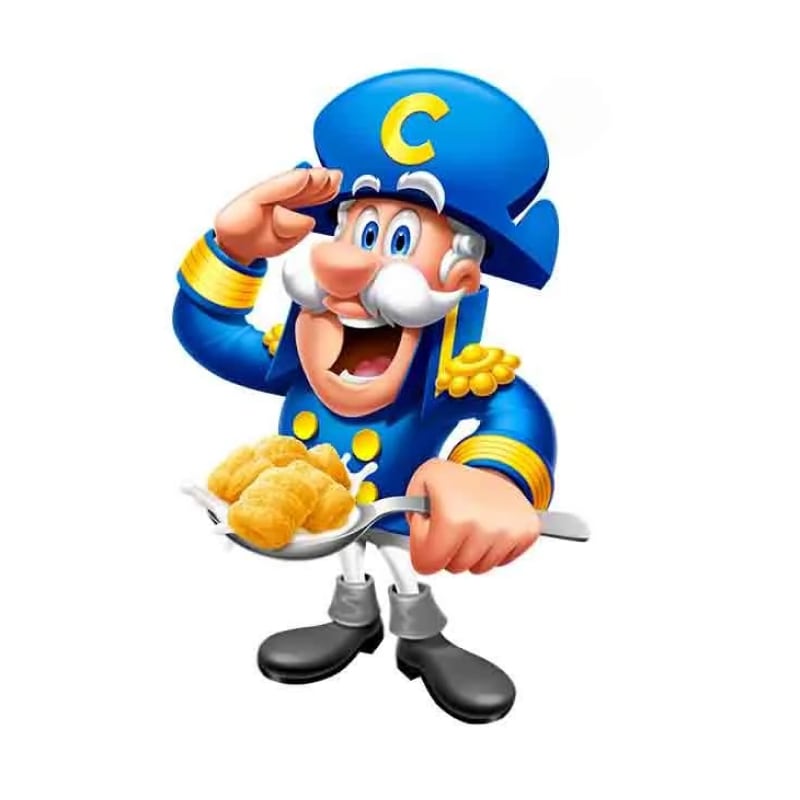
Cap’n Crunch is the fictional naval captain and brand mascots of the eponymous sweetened corn and oat cereal. Introduced by Quaker Oats in 1963, Cap’n Crunch, with his distinctive blue uniform and iconic hat, has become a beloved character in breakfast cereal history. The cereal is known for its unique texture and sweet flavor, and Cap’n Crunch’s adventures at sea have made him a timeless and recognizable figure in the world of breakfast cereals.
17. Quaker Oats Man – Quaker Oats
Debut: 1877
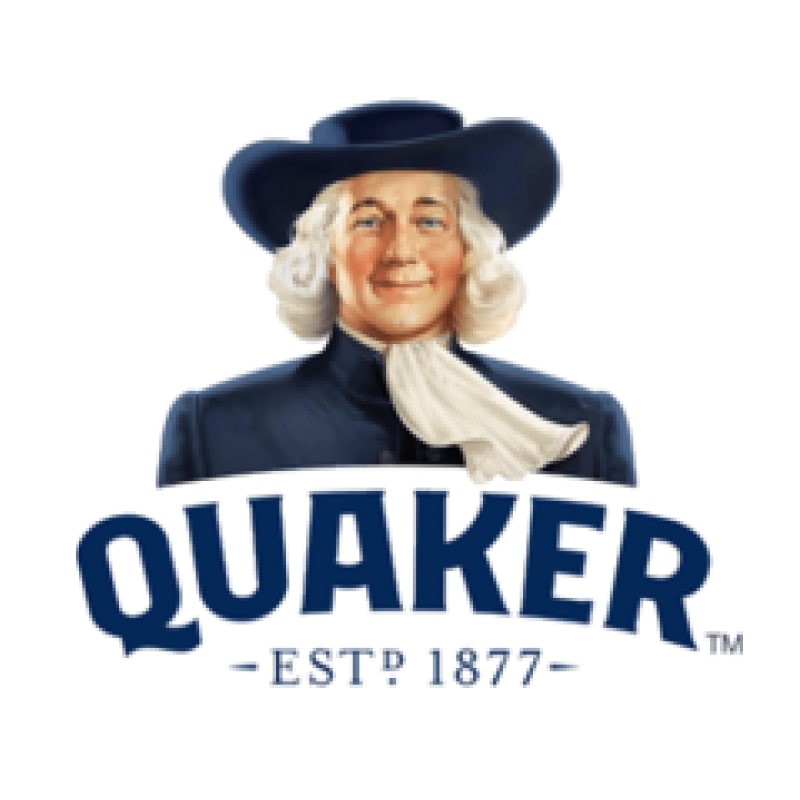
The Quaker Oats Man, often referred to as “Larry,” is the iconic brand mascots of Quaker Oats, the well-known oatmeal brand. Introduced in 1877, the mascot is a depiction of a Quaker man in traditional clothing, symbolizing the brand’s commitment to quality and purity. Over the years, the Quaker Oats Man has become a symbol of wholesome and nutritious breakfast choices, and his image has remained a constant on Quaker Oats packaging for over a century..
18. The Jolly Green Giant – Green Giant
Debut: 1926

The Jolly Green Giant is the iconic mascot of the Green Giant brand, known for its frozen and canned vegetables. Introduced in 1928, the Giant is a friendly and towering figure who promotes the brand’s commitment to providing fresh and high-quality produce. With his booming “Ho, ho, ho!” catchphrase and verdant presence, the Jolly Green Giant has become a enduring symbol of health and goodness in the realm of vegetable products.
19. Sonic the Hedgehog
Debut: 1991

Sonic the Hedgehog is the iconic blue anthropomorphic hedgehog and the official mascot of Sega, the Japanese video game company. Created in 1991, Sonic is known for his speed, attitude, and vibrant personality as he dashes through various video games. With his distinctive red shoes and blue fur, Sonic has become one of the most recognizable and enduring characters in the world of gaming, representing the fast-paced and energetic spirit of the Sega brand.
20. Geico Gecko
Debut: 1999
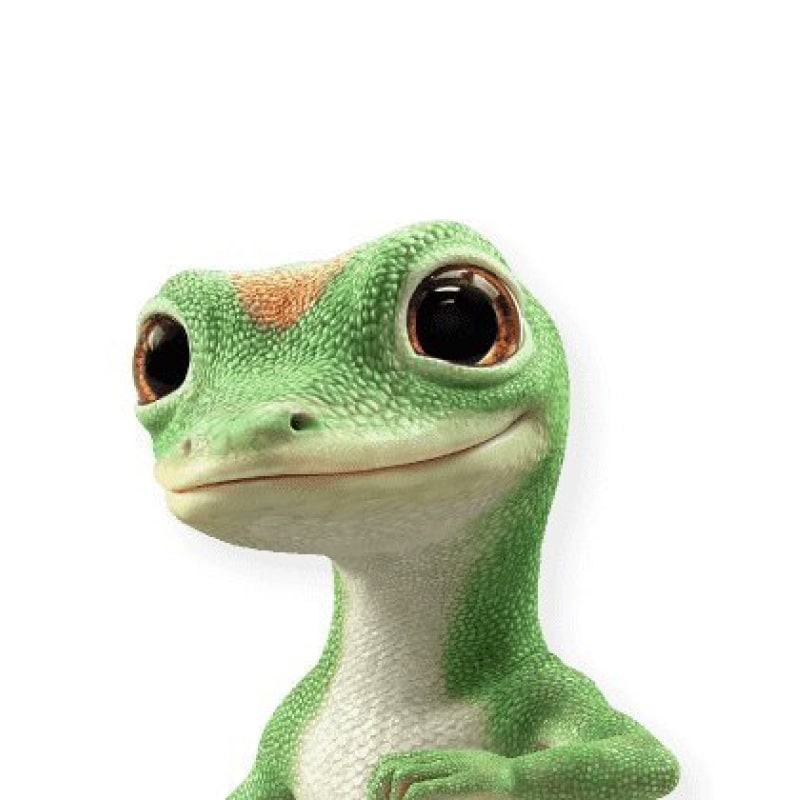
The Geico Gecko is the charming and witty mascot of Geico, an American insurance company. Introduced in 1999, the green gecko quickly became synonymous with Geico’s advertising campaigns, offering humorous and relatable commentary on insurance-related matters. The Geico Gecko has achieved widespread recognition and popularity, solidifying its place as one of the most memorable advertising mascots, known for bringing a lighthearted touch to the often serious topic of insurance.
21. Mario – Nintendo Brand Mascots
Debut: 1981
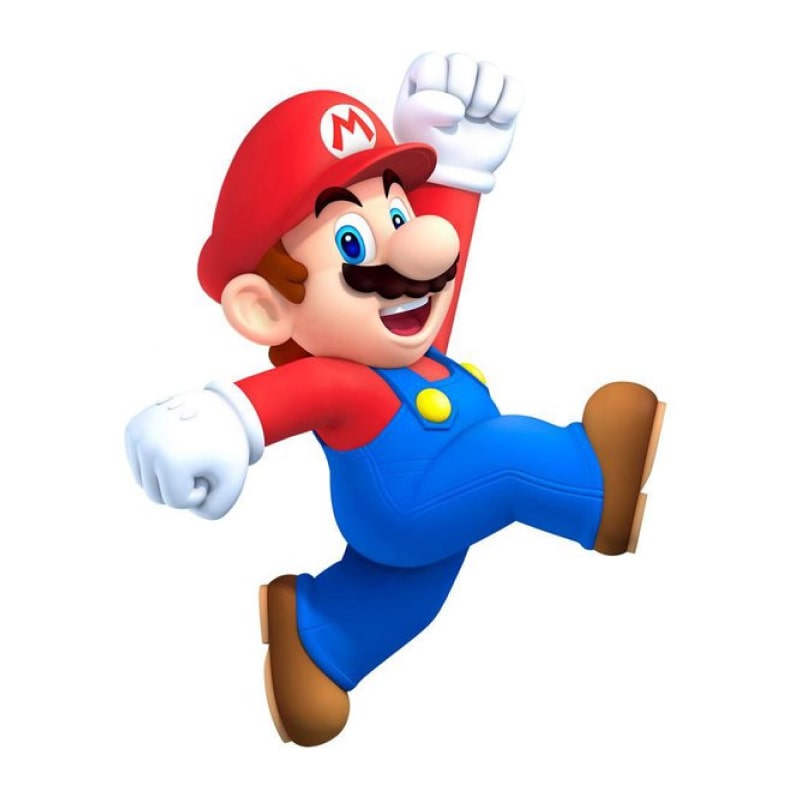
Mario is the iconic mascot of Nintendo, introduced in the classic video game “Donkey Kong” in 1981. Created by Shigeru Miyamoto, Mario has since become one of the most recognizable and beloved characters in the world of gaming. With his trademark red hat, mustache, and Italian plumber persona, Mario has been the face of numerous successful franchises, including Super Mario Bros., becoming a symbol of the enduring and diverse appeal of Nintendo’s gaming universe.
22. The M&M’s Spokescandies
Debut: 1995

The M&M’s Spokescandies are a group of animated brand mascots representing the various colors of M&M’s chocolate candies. Introduced in 1995, each character has a distinct personality corresponding to its candy color. The Spokescandies, including characters like Red, Yellow, and Green, have become iconic figures in M&M’s advertising, contributing to the brand’s playful and humorous image while highlighting the colorful variety of the popular chocolate treats.
23. Julio Pringles
Debut: 1968

As of my last knowledge update in January 2022, there isn’t a specific mascot named Julio associated with Pringles. However, it’s worth noting that mascots and marketing strategies can evolve over time. If there have been new developments or changes since then, I recommend checking more recent sources for the latest information on Pringles’ mascots.
24. Rich Uncle Pennybags by Monopoly
Debut: 1936
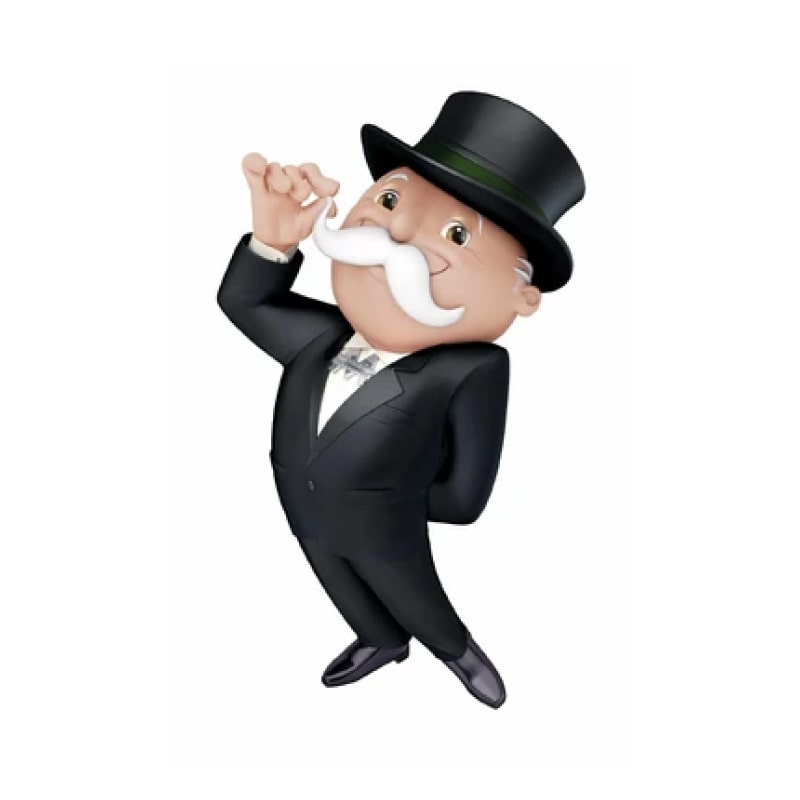
Rich Uncle Pennybags, also known as Mr. Monopoly, is the iconic mascot of the board game Monopoly. Introduced by Parker Brothers in 1936, this character is characterized by his top hat, monocle, and dapper appearance. Representing wealth and capitalism, Rich Uncle Pennybags has become a symbol of the game’s economic themes and remains one of the most recognizable mascots in the world of board games.
Conclusion
In conclusion, the enduring popularity of these 24 brand mascots underscores the significant impact that well-crafted characters can have on brand recognition and consumer loyalty. From the playful antics of the Trix Rabbit to the suave demeanor of the Geico Gecko, these mascots have transcended their commercial origins to become cultural icons. Their ability to evoke nostalgia, convey brand values, and create memorable advertising campaigns has contributed to their longevity and success.
Moreover, the diversity in these mascots reflects the varied marketing strategies employed across different industries, catering to a wide range of audiences. Whether representing breakfast cereals, insurance companies, or video game brands, these mascots serve as powerful ambassadors, bridging the gap between consumers and products. As we continue to witness the evolution of advertising in the digital age, these classic mascots serve as a testament to the timeless effectiveness of character-driven branding, leaving an indelible mark on the collective consciousness of consumers across generations.
